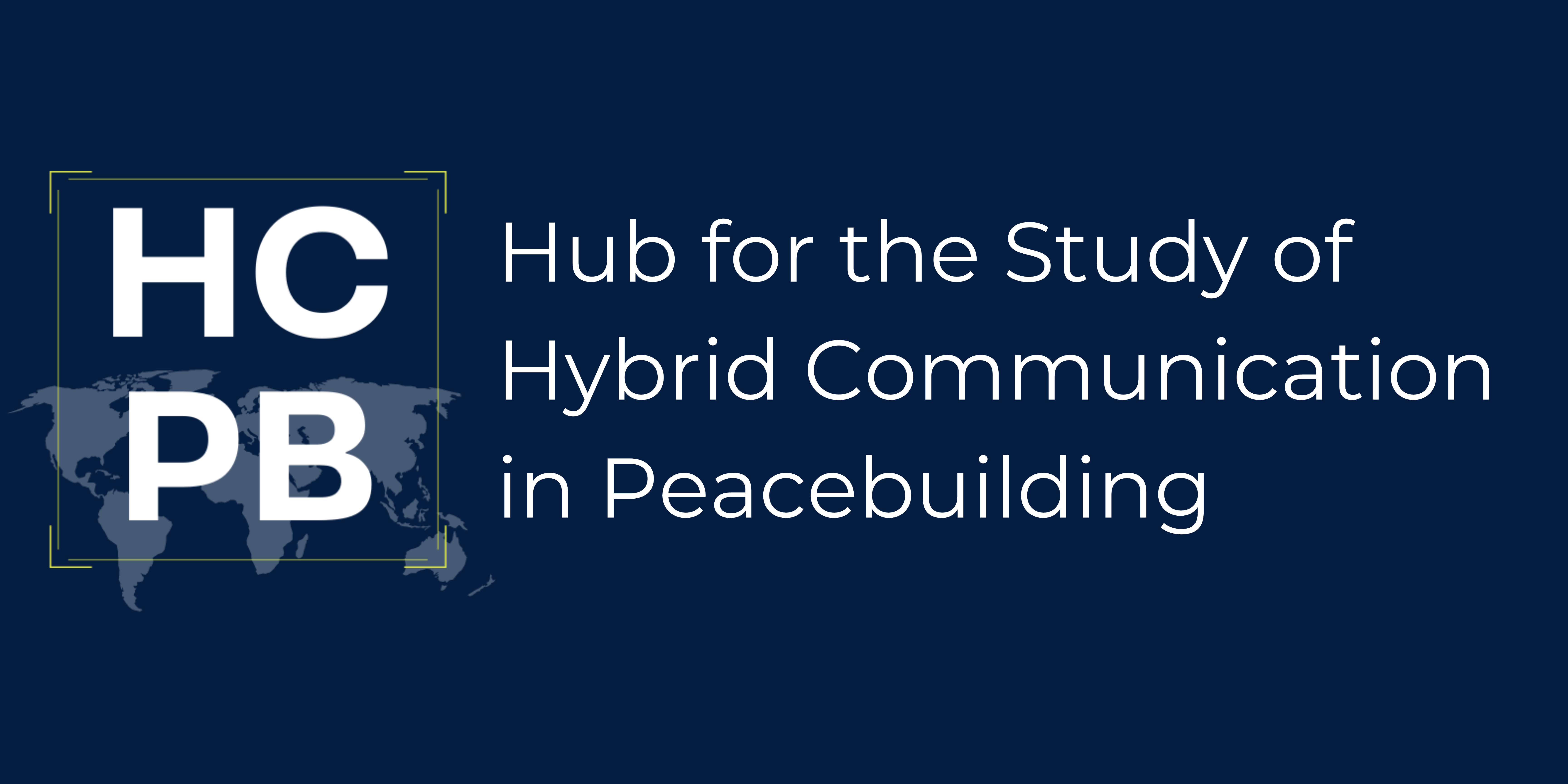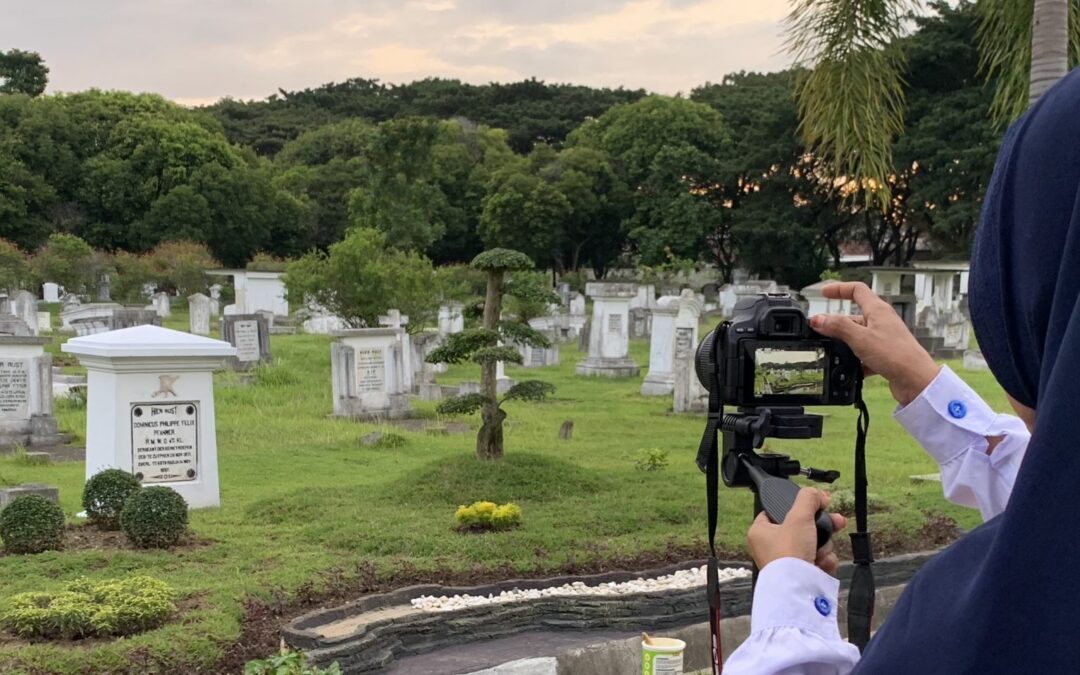Imagining a different reality: Filmmaking and Research
by Nicky Armstrong and Dr Evelyn Pauls
Scholars of the “aesthetic turn” in International Relations have broadened the scope of not only how to study international politics but also what to study (art forms, such as literature or film; aesthetic practices of states, such as military parades or national holidays; and visual material, such as photographs from Abu Ghraib). Bleiker and others have shown how “aesthetic sensibilities can help us rethink some of the most serious problems in global politics” and to find new ways of thinking, seeing, hearing, and sensing the political.
Drawing on the research project “I Have to Speak”, that used participatory documentary filmmaking to explore the long-term reintegration of female ex-combatants as both a method and a dissemination tool, we can look at filmmaking, its potential, and its challenges from three different perspectives: (1) Film as data; (2) film as method and (3) film as output.
In ‘I Have to Speak’, seven researchers, six of them former combatants themselves, went through a film and research training before filming video interviews with 43 female ex-combatants. The ex-combatant researchers decided who to interview and which questions to ask. The material was later turned into a storytelling booklet in four languages and a 20-min short film.
Film as data: widening the frame
There are myriad ways for how film can be used as data and for how to analyse visual material with entire fields of study dedicated to this. Even with a fairly simple format like a video interview, the framing of the shot – what is and is not included – can change how we interact with the film and its protagonists. The frame is political. For example, the participatory approach of the ‘I Have to Speak’ project, gave the space for researchers to work together with their interview partners in selecting a background for their interview. While the researchers paid attention to good lighting and sound conditions, the interview partners chose how to portray themselves visually on camera.
Several of the women across contexts selected their workplaces as filming locations to highlight the civilian jobs they are doing now, such as being farmers, social workers, make-up artists, and politicians. The choice of background was not always uncontroversial. For example, one interviewee from Aceh decided to be filmed in front of the flag of the Free Aceh Movement, which sought independence for Aceh from Indonesia. When a heated discussion ensued between her, the researcher and the translator, who were somewhat concerned about the message that this would send, she insisted that if the point of this project was that she could present herself as she wanted to, without having to conform to a particular image, she would choose the flag.

There are other visual cues such as the clothing of the interview partners or their non-verbal reactions to particular questions or emotive responses to the retelling or their stories. There are modes of analysis for facial expressions, silences and other non-verbal cues to enrich our understanding of what is (not) being said, notwithstanding that different cultures and life experiences makes the political nature of emotions particularly hard to code.
However, as with the analysis of spoken word or any source of data, the positionality of the researcher (or viewer of visual material in this case) will influence how that data is processed and analysed. As viewers, and past consumers of visual material, we are trained to infer meaning from particular frames, such as a close-up in an interview suggesting intimacy. The intention of the filmmaker and the perception by different audiences can be quite separate. This is not only important to keep in mind when looking at film as a source of data but also when employing it as a method.
Film as method: what it means to make something visible.
With this in mind, the creation of visual material then becomes part of the research process itself. We as researchers can begin to push the boundaries of what counts as valued research which can be a worthwhile process in and of itself. When framed in this way the creation of the visual on/or from events can move beyond just data collection – what we are doing is creating the space for imagination and interpretation.
The process of making ‘I Have to Speak’ was as important as the final product. Through telling their stories in their own words, often for the first time to an audience or for the first time in many years, the women did not represent their past or themselves as former combatants, but they presented something new in the moment of the interview.
Documentary film allows interviewees to speak directly to the audience, including intonation, emotion and body language. But of course, the final film that is being watched by audiences is not a copy of reality, not a perfect replica of the encounter that happened between interviewer and interviewee. Throughout the editing process, the filmmaker/editor(s) have a responsibility to preserve something that is true to the encounter, to be aware that by including and excluding particular material, they are curating the image that the audience will receive [1].
By reframing how we approach our methods in this way, we can see them as undisciplined and un-coupled from their traditional parameters. Rather than just being a means through which we can ‘present’ the subject/participant to an audience, we can actively connect our methods and output with the dissemination, rather than seeing them as separate processes in isolation from one another. Here the weight can shift from communication and dissemination being functional, towards seeing this process as a continuation on the research itself. The film begins to exist in its own right where different audiences will receive it in different ways. Rather than transmitting a fixed message, the filmmaker cannot direct where the story goes from here. Film as method allows for and encourages the viewer’s imagination to take over.
Film as output: imagination and interpretation
Opening up the space for viewers’ imagination is one of the reasons why visual methods engage a wider audience. The audience is not a passive observer, rather they are free to imagine, react to the experience and formulate their own views about the film. This freedom to explore our emotions rather than being told what to think or feel is what makes it all the more engaging.
It is here that we reach a point of departure from the original contact with the content by the researcher/producer. As film begins to exist in and of itself, taking on different forms and meanings for different audiences, where their “imagination has both to attend to very real experiences and very real situations and at the same time transcend the status quo, imagine an alternative.” This uncertainty and ambiguity is where the unseeable “surplus” value of aesthetic works becomes so powerful.
One of the motivations for using participatory filmmaking in ‘I Have to Speak’ was its potential to do exactly this – speaking to a variety of audiences and have them engage with a topic that they are unfamiliar with and might have a resistance to (national and international policymakers), preconceived notions about (members of post-conflict societies) or don’t think is important (male ex-combatants). Listening to and feeling with the protagonists in the film asks them to open up their imagination to the possibility of an alternative response, other than resistance.
How audiences respond, and why they feel the way they do will always be much harder to decipher, it is here the work in the space between disciplines becomes validated, where removing disciplinary constraints means we can mobilise this grey area trapped in the ‘but how and why?’ funk. For example, by combining approaches from visual sociology or visual anthropology with international relations, we can better understand what it is about the visual that ‘provokes’ emotion around the political and if (and how) this creates new ways of thinking about, and responses to political issues.
Conclusion
If we stop, reflect and explore where we are at with filmmaking as a participatory method, we can not only ask what this type of work means for knowledge production, but also reflect on it as a way of understanding agency and affect – of the researcher and filmmakers, the protagonists or the viewers.
Yes, we have little control over how an audience will view a film at the point of dissemination nor should we necessarily want to. Allowing space for the film to be read and interpreted in different ways by different audiences is part of the beauty of this method.
The fluidity between what the film/project set out to represent, what it ended up presenting, and how people received it is part of the strength of the method. For ‘I Have to Speak’, it allowed audiences as varied as students of IR, peace practitioners, international policymakers and (ex-) combatants from their own and other conflicts to see different female combatant experiences, react to their stories in different ways and ultimately imagine what a truly inclusive peace could look like.
[1] A special thanks goes to Daniele Rugo who took the time to speak with us about his perspective as a filmmaker, artist and scholar who works on conflict and sustainable peace. His latest feature documentary About a War explores violence and social change through the stories of former militiamen from Lebanon’s civil war.
Author bios:
Nicky Armstrong is Communications Manager at the LSE Centre for Women, Peace and Security and on the Gender, Justice and Security Hub. Her current work explores search engine optimisation (SEO) and online information structures and dissemination to understand how these have a bearing on what is classified as ‘legitimate’ knowledge in conflict and peacebuilding settings. She tweets at @NickyArmstrong0
Dr Evelyn Pauls (she/her/hers) is the Impact Manager of the UKRI GCRF Gender, Justice and Security Hub, based at the LSE Centre for Women, Peace and Security. She recently led a participatory action research project on the long-term reintegration of female ex-combatants using documentary filmmaking in Burundi, Indonesia, Nepal and the Philippines. She completed her PhD in International Relations at the LSE in 2019, which focused on international norms and child soldiering in Sierra Leone and Myanmar.

